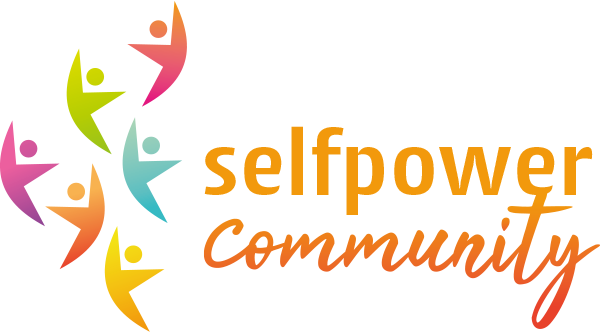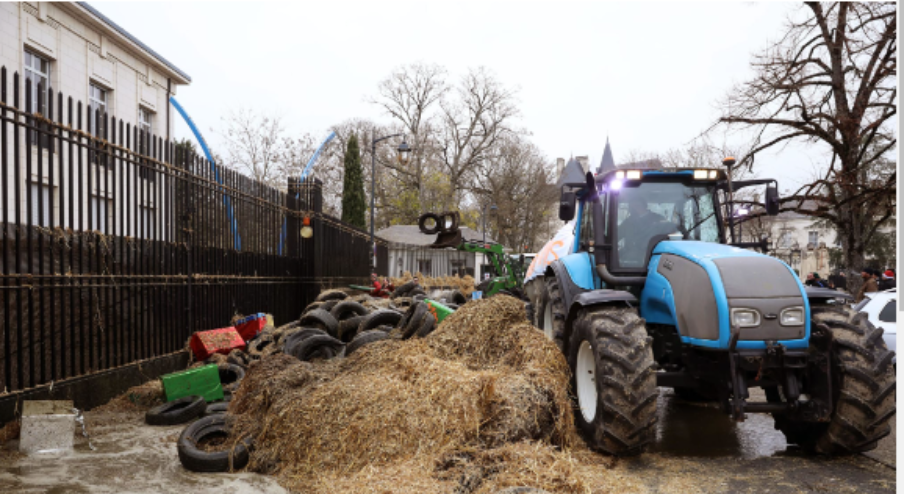72- 01/03/2024 In France and across Europe, farmers’ despair has turned into a contagious social movement. “No country without a farmer”, say the angry demonstrators. From the heights of their tractors, they denounce oppressive bureaucracy, suffocating standards, unfair competition, increasing workloads and stress. Worse still, the income they receive for their efforts has never been so low. How can a collective desire to preserve a rural economy and promote sustainable agricultural practices go so wrong, and have such devastating effects? What solutions are possible? Can research help find a way out of the crisis? At least, that’s what the Selfpower-community team thinks, having discovered the promising furrow dug by Patrick Baur, an agricultural researcher at the University of Rhode Island (USA)[1]. His studies with California fruit and vegetable growers explore the possibility of transforming agricultural models through empowerment rather than coercion.
Agriculture faces an accumulation of restrictive measures
In the United States, as in France, numerous external constraints and societal aspirations are prompting farmers to adopt the principles of safer, more sustainable agriculture. But these virtuous objectives are bogged down by an uncoordinated patchwork of rules, regulations, and incentives. Farmers feel trapped by layers of at times inappropriate and contradictory requirements. They see these cumbersome procedures as a limit to their autonomy, independence and self-determination, and to their ability to farm better, even when they want to. The result is a feeling of frustration and mistrust towards the system and its experts, which compromises the pursuit of societal objectives for agriculture.
_________
Agroecology vs. integrated systems: the call to reduce meat consumption and increase plant-based diets can create friction with incentives to develop integrated crop-livestock systems that encourage sustainable nutrient cycling.
____________
One solution would be to move away from systems that focus solely on constraint. But how do we go about it? To answer this question, Patrick Baur investigated. He began by identifying five kinds of structural forces, or institutions, that limit farmers’ choice:
- regulatory provisions, which set rules and standards and exacerbate the feeling of being under control,
- markets and supply chains, through which the powerful retail sector dictates contract terms, labeling or certification, and defines what is appropriate or acceptable,
- legal responsibility, which aims to discourage socially undesirable behavior by punishing offenders,
- social norms and networks that express dominant culture and thinking, define priorities and shape farmers’ values, attitudes, and beliefs,
- scientific advances and technologies that determine the boundaries of what is possible
Not to mention the biophysical factors that farmers have to take into account, such as land and climatic data influencing soil fertility and health, pest attacks, cropping decisions and pathogen loadings… Finally, socioeconomic parameters such as property rights, land values and agricultural loan conditions, as well as decision-making methods, also determine their decisions.
With these criteria established, the researcher compared the institutional manifestations of two distinct societal obligations for agriculture, namely environmental sustainability and food safety. He focused on three areas where safety and sustainability overlap: wildlife, water and soil conservation. More specifically, he looked at the impact of constrained choices on people’s ability and power to act.
Constrained choices: choices guided by pragmatism and exposure to legal risk
Faced with divergence between realizing societal goals for food safety and agricultural sustainability in practice, California farmers orient their choices towards those they perceive to be the most feasible within the limits imposed by their institutional environment. On this point, food safety is more consistently aligned with institutional forces than sustainability, which struggles to clearly define, let alone measure, progress. Indeed, the imperatives of food safety and their results are clearly measurable, and the penal responsibilities entailed by non-compliance are concretely identified, giving rise to a common understanding on the part of all stakeholders. On the other hand, the nebulous scope of sustainability invokes general aspirations for “better” agriculture that are less tangible in time and space. And the question of responsibility remains ambiguous. Do farmers really have the capacity and power to fulfill all these responsibilities in practice? Finally, the “siloed” approach to policy and politics combined with official ignorance of contradictions and trade-offs among the various obligations imposed on farmers does little to promote trust or cooperation with sustainability advocates
_______
Chronic exposure to constrained choices reduces farmers’ autonomy, even in the face of ethical challenges. (Hendrickson & James, 2005)The multiplicity of logics is a source of confusion for those who have to manage competing priorities (Higgins et al., 2016).
Possible solutions: local adaptation and fairer balance between incentives and penalties.
Patrick Baur suggests designing requirements to allow farmers greater autonomy in adapting to local conditions, and striking a balance between societal needs and benefits, and their cost to the farmer – a cost not only in financial terms, but also in terms of training, adaptation time and return on investment.
He also advocates tackling agricultural systems holistically, arguing for systemic reform of legal institutions, markets, and the education system, in addition to farmer training and awareness (Broad Leib and Pollans 2019).
Another proposal is to revisit the issue of liability. For example, as the risk of pathogenic contamination can never be zero (De Keuckelaere et al. 2015), it may be reasonable to limit farmers’ liability for food safety. Without increased protection against food poisoning lawsuits, farmers will likely continue to prioritize food safety, even at the expense of sustainability. Thus, greater access to liability insurance could also mitigate farmers’ legal risk.
Other recommendations include the idea of rebalancing market incentives between safety and sustainability. Indeed, farmers might feel empowered to manage safety and sustainability equally if the market price covers the additional costs of more complex farm management, or if buyers prioritize sustainable farming practices. These incentives also presuppose upstream agreement on what sustainable agriculture means and how to measure it.
Finally, it is necessary to take into account the diversity of farms, from the largest industrial farms to family farms selling direct to consumers, as well as medium-sized farms. For example, large farms need to maximize yield and ensure a strict standard of crop quality to gain access to large supply chains, while small farms can benefit from greater marketing flexibility.
On the other hand, large, well-capitalized farms have more resources at their disposal, and often greater room to maneuver in terms of management or access to the latest research and technology. For example, they can more easily adopt sustainable “improvements” such as water-saving micro-irrigation systems.
The impact of farm size on food safety is still the subject of debate. Small producers may face different challenges, requiring tailored interventions, while others argue for universal standards. Partial exemptions for small farms under the US Food Safety Modernization Act (FSMA) have raised safety concerns, under the argument that pathogens in principle affect all scales equally—although the counter-argument is that longer supply chains for large farms can magnify risks. Consumer reaction to outbreaks certainly does not vary according to farm size. The controversy continues…
Constrained choices are a barrier to empowerment
Society must acknowledge its contradictions, its conflicting rules, its markets subject to the dictates of supply chains and consumer purchasing power. It must also admit that farmers cannot resolve such equations, and it is inappropriate to burden them alone with the weight of these dilemmas.
Everyone knows that choices are determined by various factors beyond individuals’ immediate control. Most of them are social constructs made upstream at a structural or systemic level, themselves resulting from other historical and cultural choices. Therefore, it cannot be said that, under these conditions, the choice falls under the farmer’s responsibility. On the contrary, it must be acknowledged that in the case of constrained choices, there is a loss of individual autonomy and accept that responsibility is partly societal. To follow through with this reasoning, the insurance system must also be reconsidered to take into account this chain of causality.
As a result, complex decisions cannot be left to one person alone; they require awareness at all levels, negotiations, and public debates leading to clear and coherent directions. Avoiding making these decisions and shifting the choices onto farmers is neither fair, nor equitable, nor even functional.
In conclusion, Patrick Baur explains that aspirations for “better” agriculture struggle to materialize due to constraints largely beyond farmers’ control. Therefore, farmers should not be held solely responsible for the delays in agro-ecology. Policymakers and experts should acknowledge and work within the basis of the existing institutional context, its drivers and constraints. They should also seek to enhance trust and support farmers’ capacity to exercise their expertise and skill at managing their own farms and farmland, rather than designing measures focused mostly on limiting their autonomy. In this regard, the “choices” that need to evolve the most are to be found outside of farms rather than within…
Summary and analysis of the article by Marie-Georges Fayn
[1] Baur, P. (2022). When farmers are pulled in too many directions: comparing institutional drivers of food safety and environmental sustainability in California agriculture. In Social Innovation and Sustainability Transition (pp. 241-260). Cham: Springer Nature Switzerland.
Link to Patrick Baur research group website https://baurfoodsystemslab.org/
Bibliography
Broad Leib, Emily M., and Margot J. Pollans. 2019. The new food safety. California Law Review 107: 1173.
De Keuckelaere, Ann, Liesbeth Jacxsens, Philip Amoah, Gertjan Medema, Peter McClure, Lee-Ann Jaykus, and Mieke Uyttendaele. 2015. Zero risk does not exist: Lessons learned from microbial risk assessment related to use of water and safety of fresh produce. Comprehensive Reviews in Food Science and Food Safety. https://doi.org/10.1111/1541-4337.12140.
Hendrickson, Mary K., and Harvey S. James. 2005. The ethics of constrained choice: How the industrialization of agriculture impacts farming and farmer behavior. Journal of Agricultural and Environmental Ethics 18: 269–291. https://doi.org/10.1007/ s10806-005-0631-5.
Higgins, Vaughan, Melanie Bryant, Marta Hernández-Jover, Connar McShane, and Luzia Rast. 2016. Harmonising devolved responsibility for biosecurity governance: The challenge of competing institutional logics. Environment and Planning A: Economy and Space 48 (6): 1133–1151. https://doi. org/10.1177/0308518X16633471.





En postant un commentaire sur www.selfpower-community, vous acceptez les règles de l’espace réaction et reconnaissez à www.selfpower-community la capacité de ne pas publier certaines contributions sans avoir à motiver cette décision.
prendre connaissance des règles